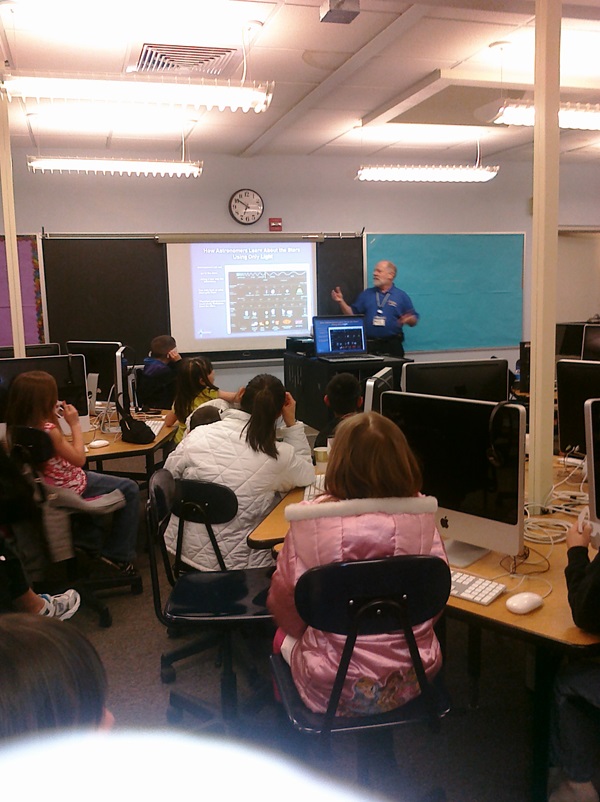Key Takeaways:
Astronomy magazine has chosen The Albuquerque Astronomical Society (TAAS) as the winner of its 2011 Out-of-this-world Award for outstanding public programming.
TAAS’s many accomplishments helped it stand out from the competition, including their popular School Star Party Program. At these twice-monthly events, hundreds of students attend a special variety of events at their schools, where they can enter an inflatable planetarium, learn about the science of astronomy through hands-on activities, study actual astronomical data, and get out under the stars to observe through TAAS telescopes. The children are always free to choose which activities to engage in, and all go home with a souvenir in hand (photos, starmaps, completed projects, etc.). There’s now a waiting list of over a year for interested schools, so it’s no wonder that in 2011 alone, the group reached more than 2,000 students at these star parties. And that’s just one aspect of their outreach program! The club also holds a variety of other public events, bringing astronomy to the dedicated amateur and inexperienced novice alike.
TAAS plans to use its $2,500 Out-of-this-world Award prize money to expand a natural offshoot of their school star parties, the Telescopes for Teachers Program, which puts 6- or 8-inch Dobsonian reflectors in the hands of local elementary and middle school educators. The program proved successful, and more than a dozen more teachers are interested in participating. In addition to this project, which single-handedly returns astronomy to young students’ educations, TAAS also plans to upgrade its real-time deep-sky photography using CCD imaging to bring the farthest galaxies and nebulae to life in an urban setting. (The upgrade will also accommodate older star party attendees who have trouble looking through a telescope by displaying the celestial sights on large screens.)
Outreach has long been important to TAAS, which began focusing on education more than 25 years ago. “This goes back many, many years,” says David Pitonzo, TAAS director at large. “It’s a really dedicated program.” He says it’s clearly worth it because the group often gets a variety of thank-you notes from students and their parents. TAAS feels especially motivated to make sure today’s students learn about their place in the universe. “If you live on a planet,” Pitonzo says, “it’s a good idea to know at least a little about what it’s doing.”
Astronomy’s Out-of-this-world Award rewards ongoing programs sponsored by an educational or civic organization. The award recognizes a group’s sustained efforts to involve its local community in the science and hobby of astronomy. TAAS is the sixth winner since the award debuted in 2006. Last year’s award went to the Santa Barbara Astronomical Unit in California, the previous year’s award went to the Amateur Observers’ Society of New York, and the 2008 award went to the Cincinnati Observatory Center. The winner receives $2,500 from Astronomy magazine. This year, more than 20 groups entered from almost a dozen U.S. states and six other countries.
“This was another great year of astronomy club submissions, which made it difficult to pick a winner,” says David J. Eicher, editor of Astronomy magazine. “The Albuquerque Astronomical Society was one of our finalists last year, so it’s great to be able to reward their persistence and excellent programming. But so much wonderful outreach takes place all over the country and the world that it’s still hard to pick just one winner. Each of the entrants deserves congratulations for their fantastic efforts, and we thank them for doing so much to promote the hobby and science of astronomy.”












